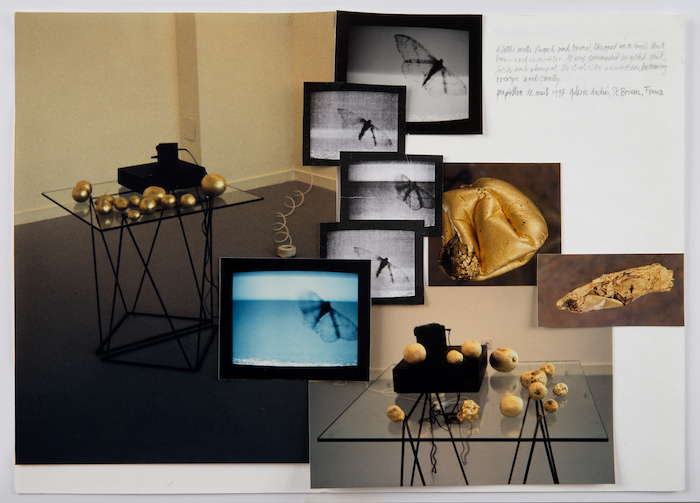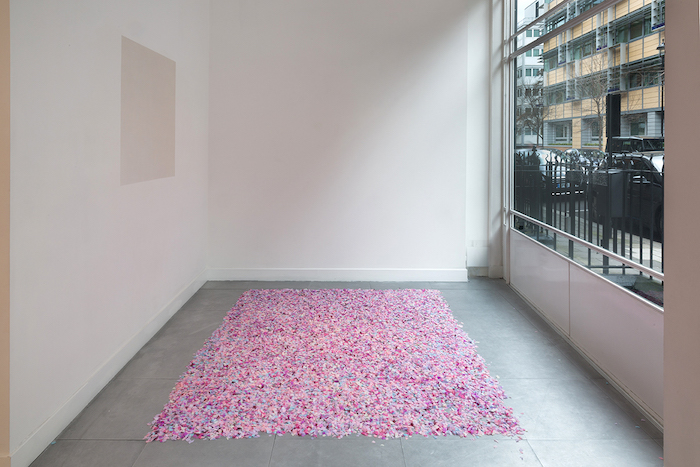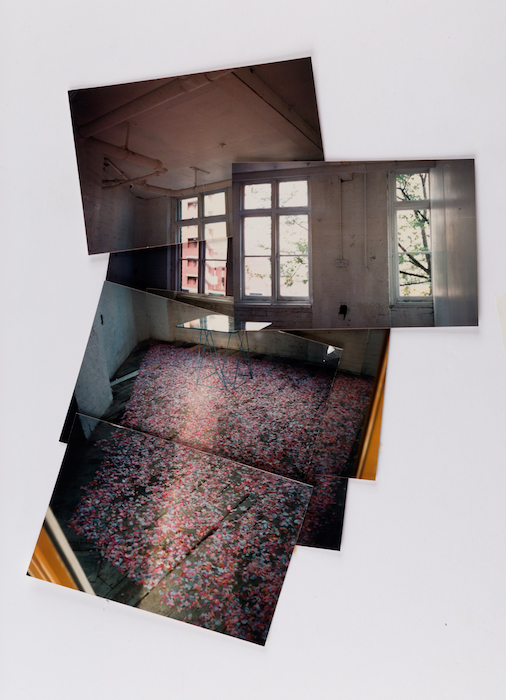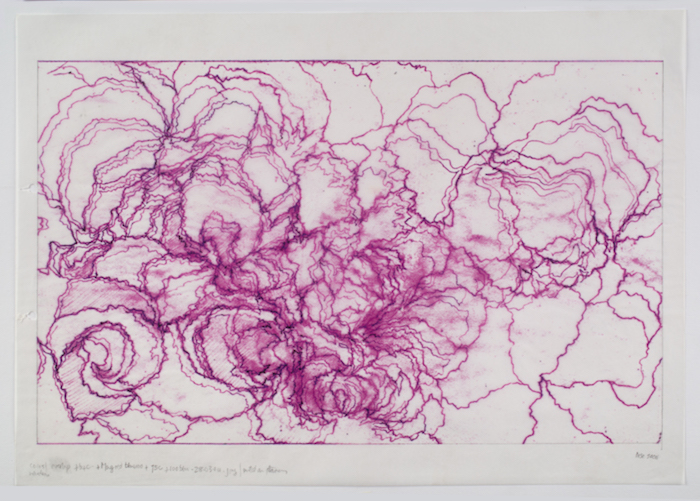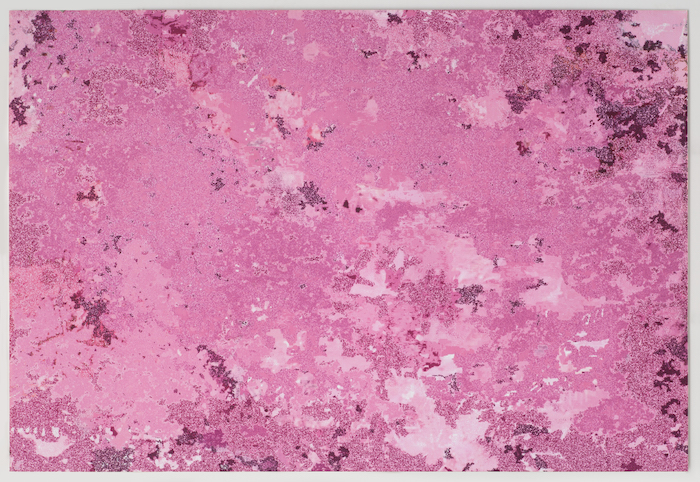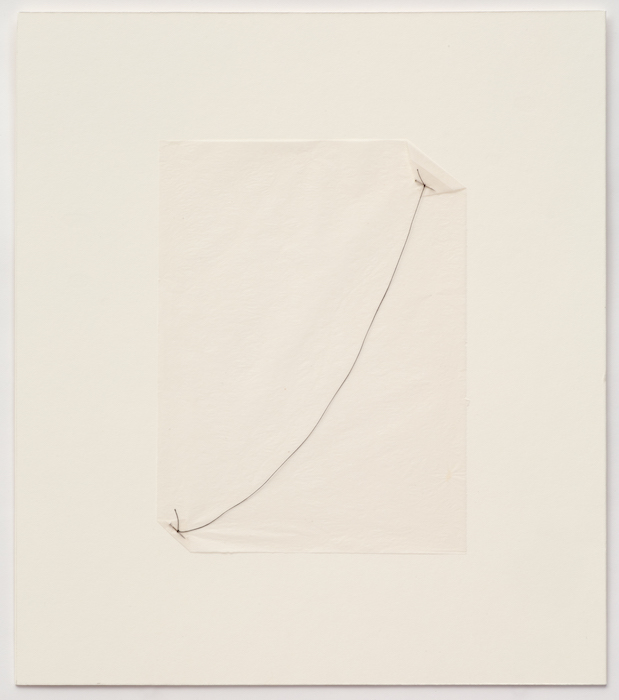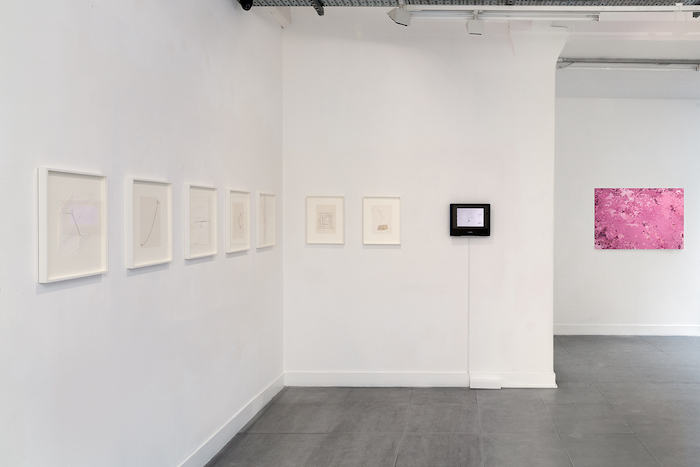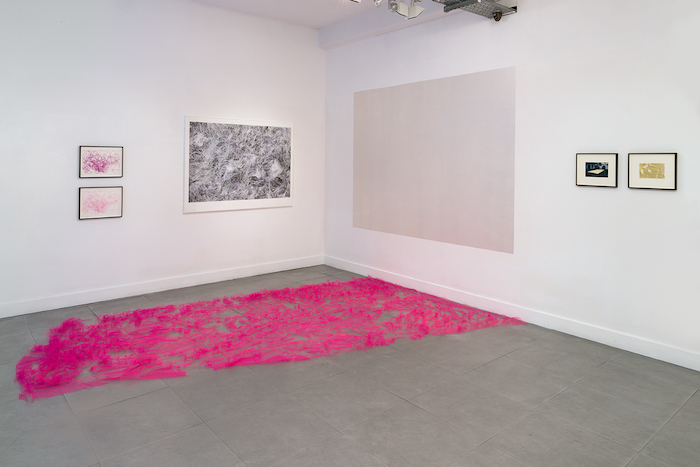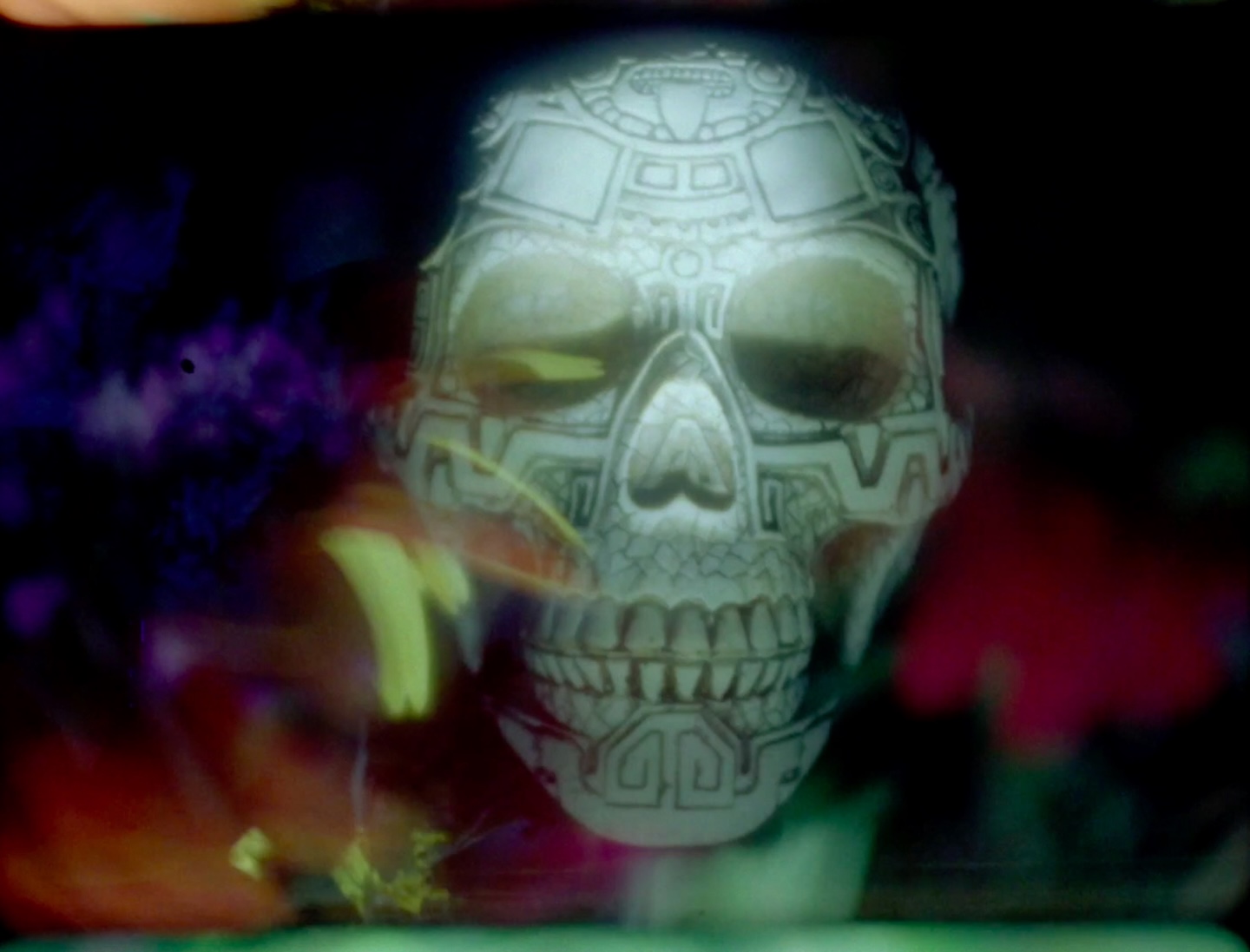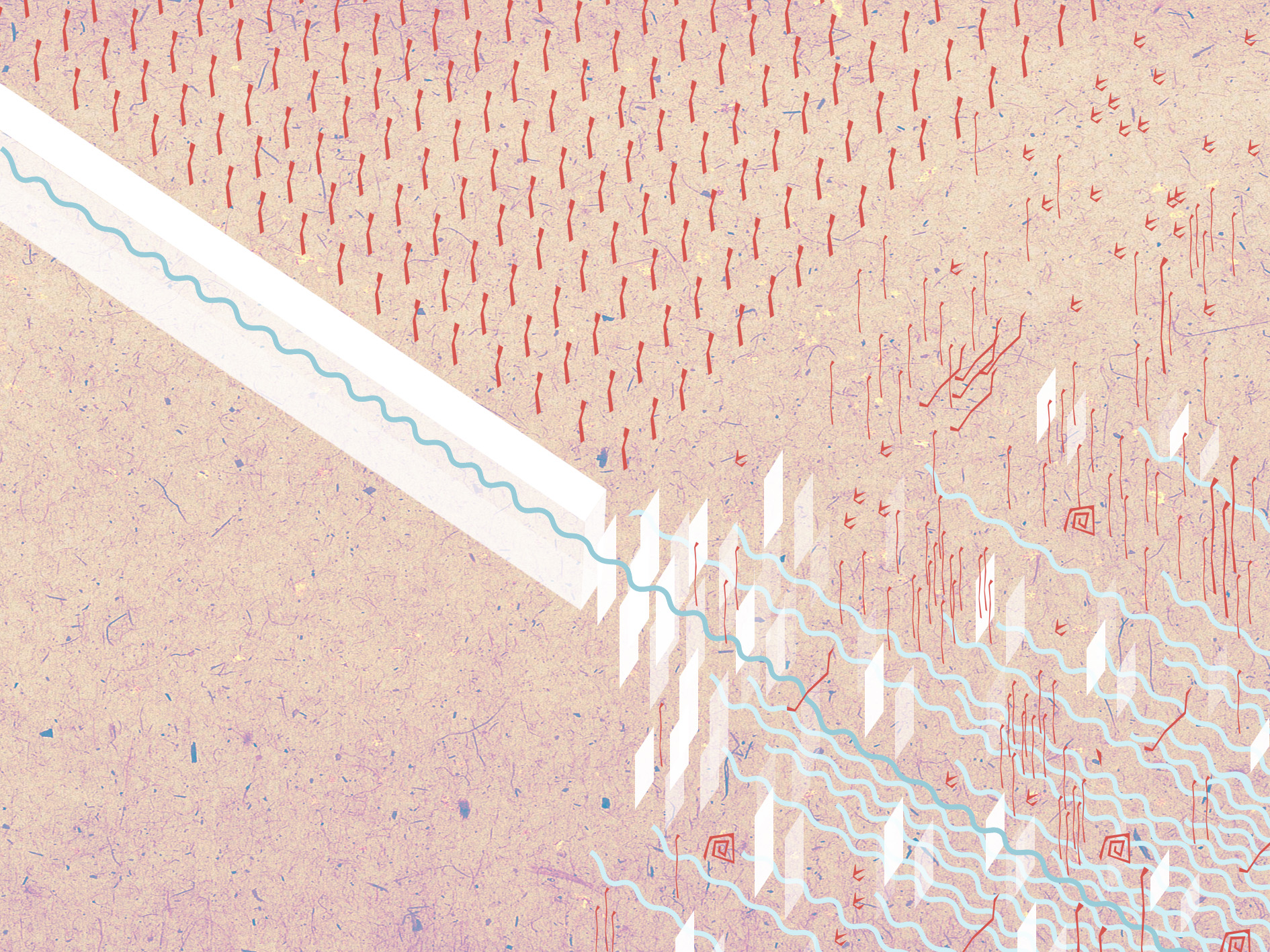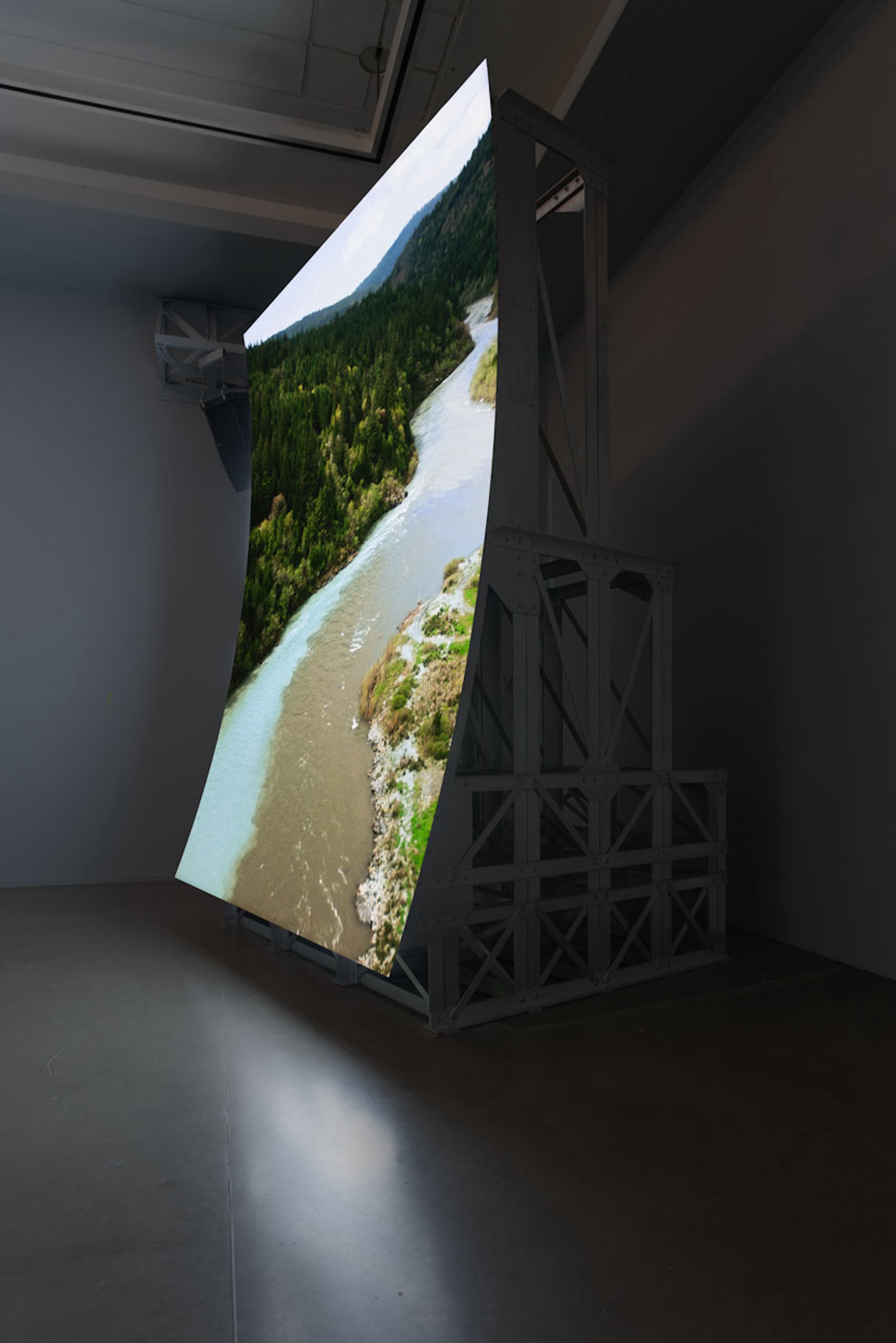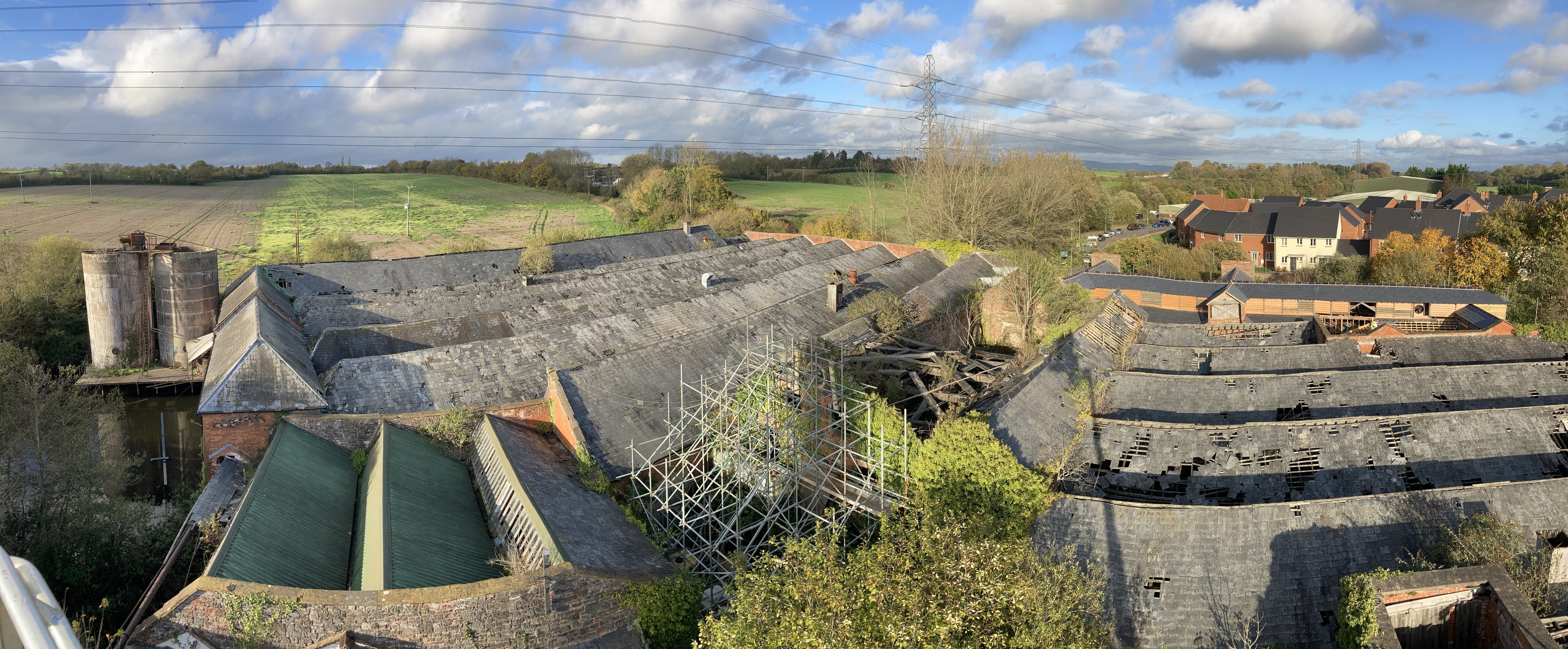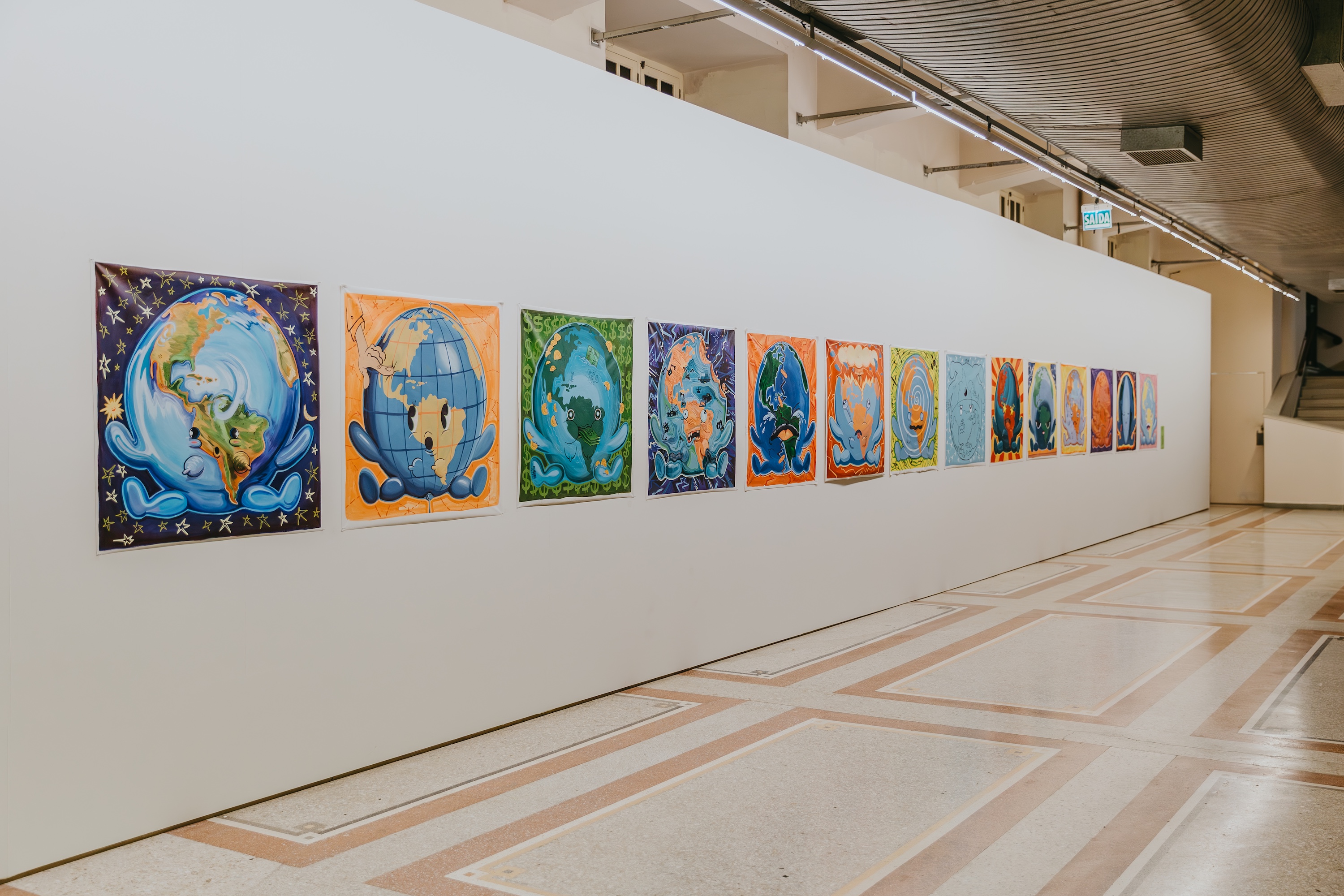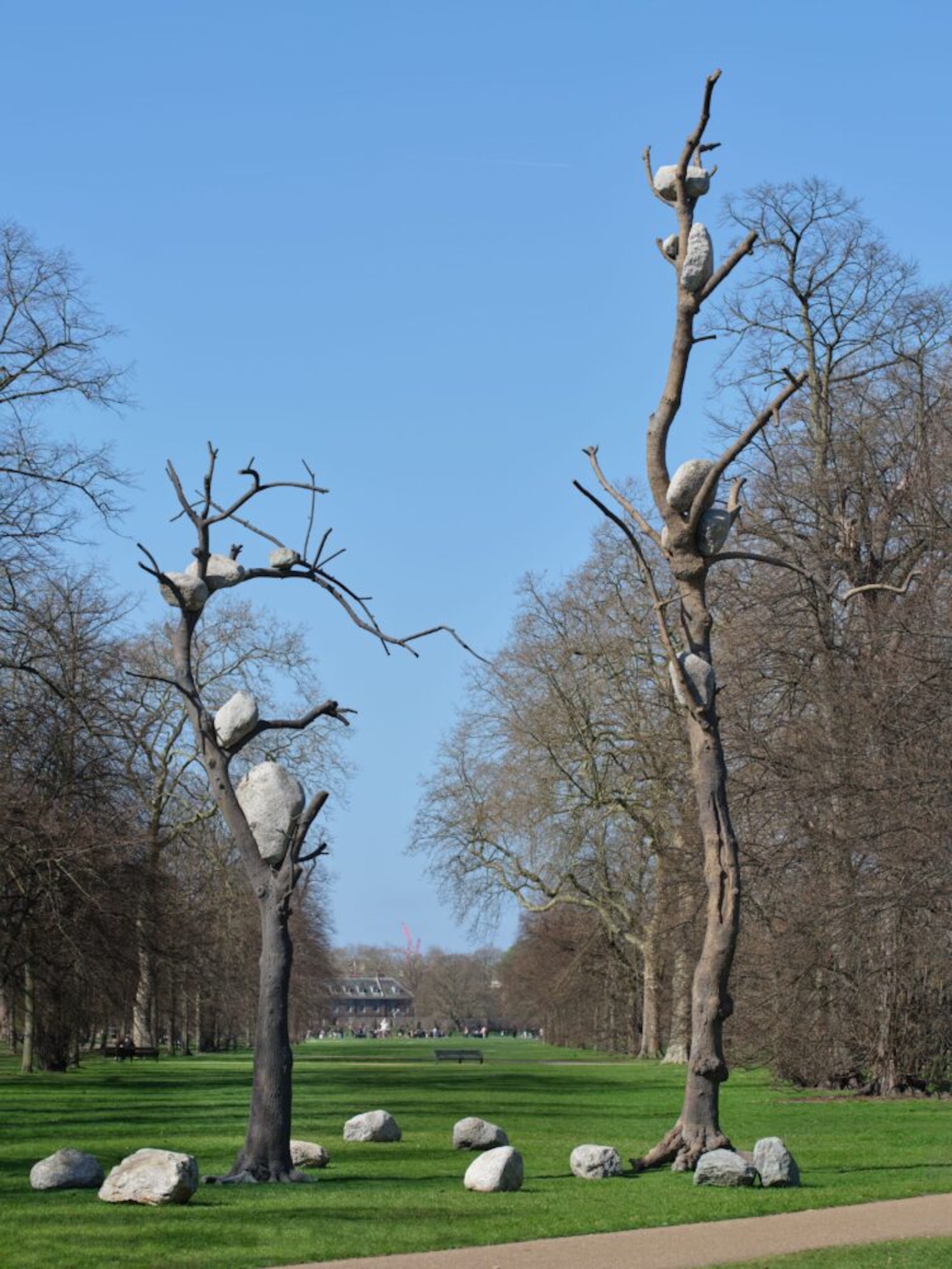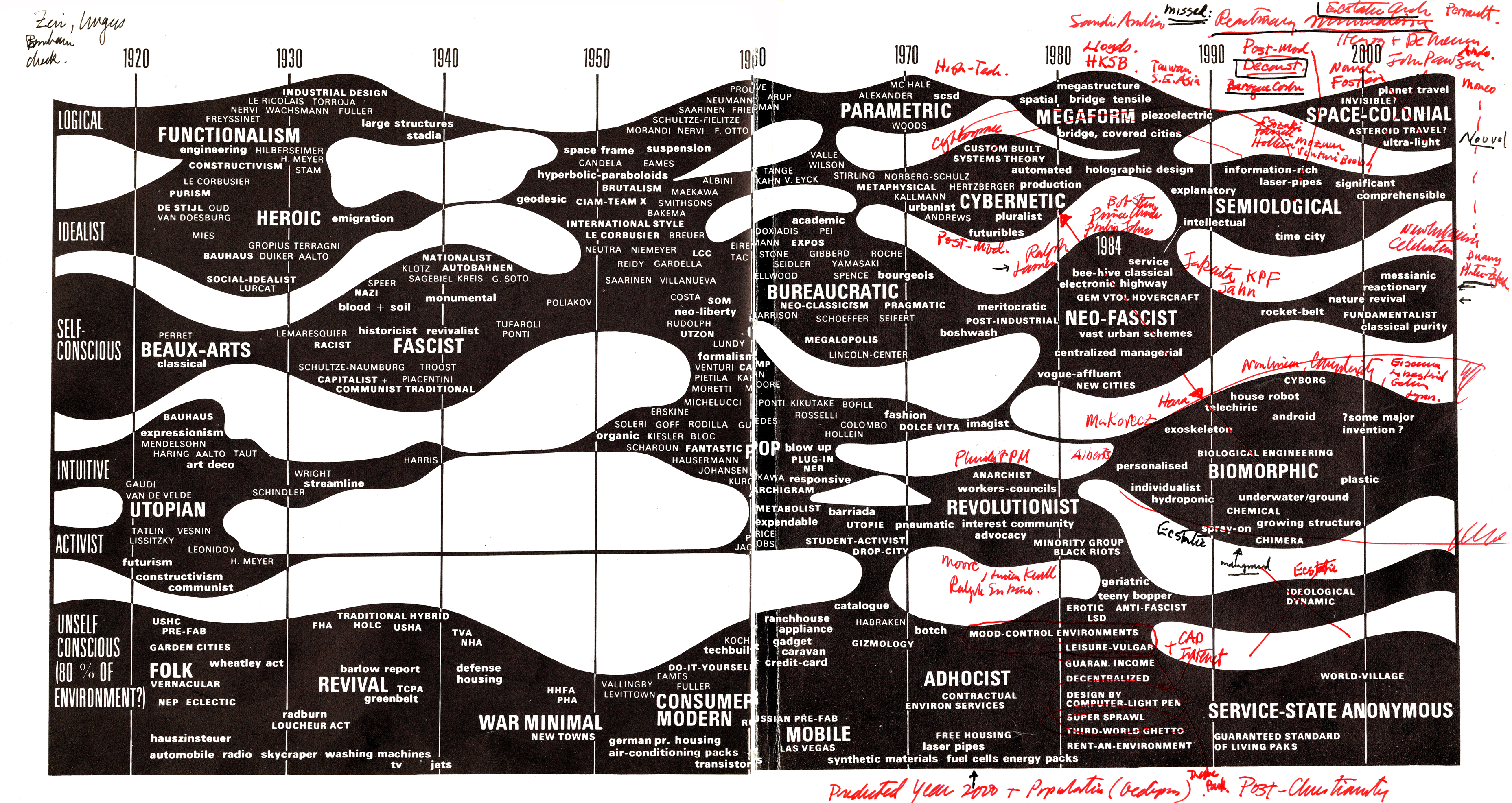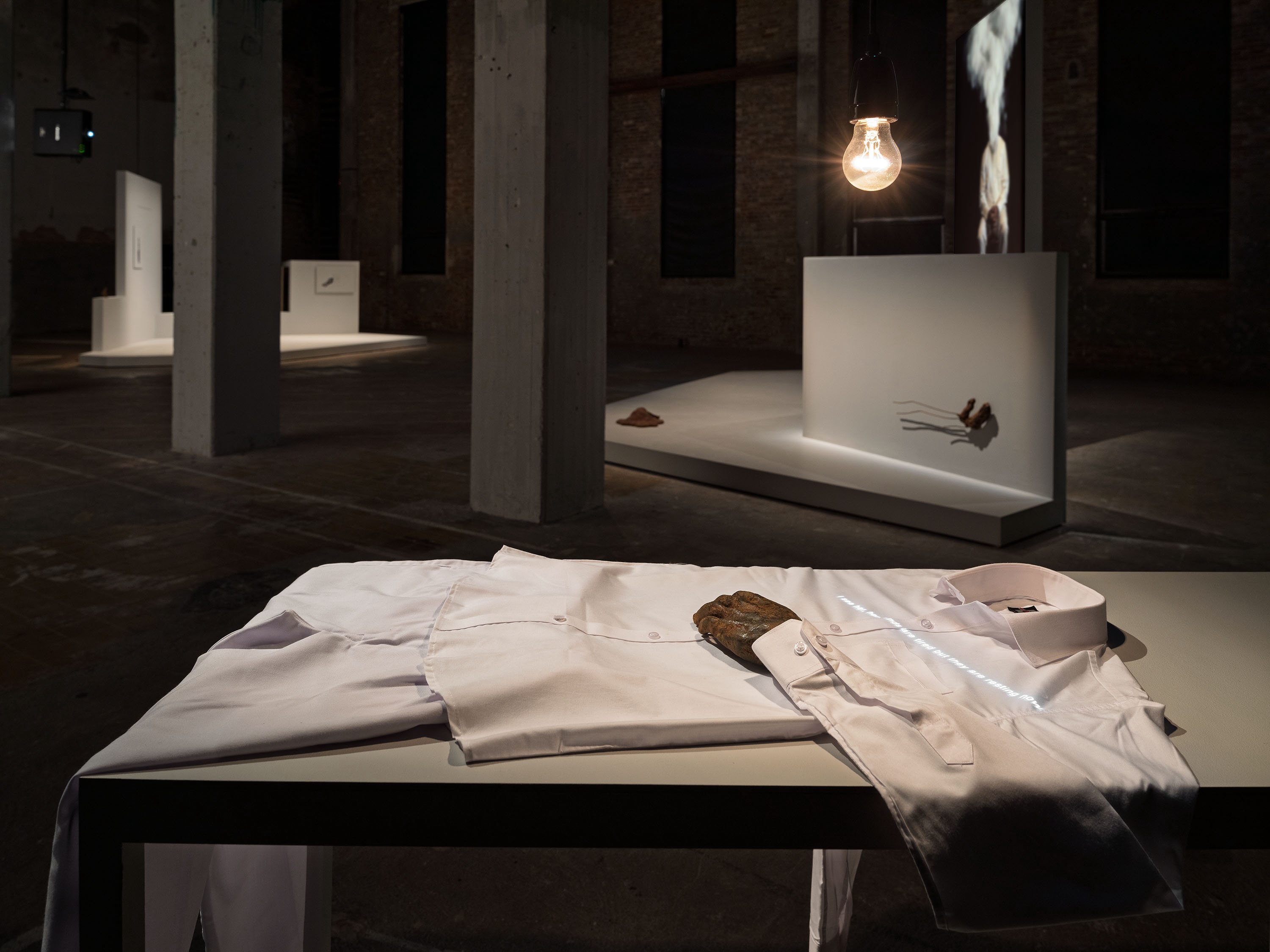April 1–May 13, 2016
Shelagh Wakely’s Papillon de Nuit (1993)—modestly framed on the white wall of a metal-floored room at Richard Saltoun Gallery—is a collage assembled from photographic documentation of an installation of the same name, in which a video monitor showing a restless, fluttering moth was placed on a glass table, surrounded by gilded fruits. These ornate forms decayed over the course of the exhibition, rotting, collapsing, oozing, evaporating, until all that remained of them—“fresh and ripe at the start of the exhibition,” the artist notes in scribbled pencil in the top-right corner of the collage—was their gold-plated skins, crinkled husks of moldy opulence that had become “overripe and smelly.” As a moth must emerge from a pupa, a shell of organic matter, to complete the transition from larva to adult insect, so must a fruit rot from the inside, and burst the limitations of its decorative skin, before the installation’s effects are complete: in both cases, organic forms are presented as discardable containers for something ephemeral, fleeting, airborne—an insect and an odor of rot. Less important than the material substance of Wakely’s sculptures and installations are the transitions inherent in their composition and, ultimately, decomposition.
Wakely, who died in 2011, aged 78, was loosely affiliated with the “New British Sculpture” movement of the 1980s, which was characterized by a return to more conventional materials and forms. Yet, in contrast to the muscular (or macho) chunkiness of works by Tony Cragg, Richard Deacon, Anthony Gormley, and other more widely known British sculptors of the era (and although she completed a number of public commissions towards the end of her career using more durable materials, including a mosaic for the Royal Albert Hall in 2003), her pieces were typically extraordinarily delicate, often frail and self-effacing, sometimes—as illustrated by the gilded, rotting fruit—physically dissolving with time.
In “Paris: Capital of the Nineteenth Century” (1935), Walter Benjamin argued that “to live means to leave traces.”1 Wakely’s installations and sculptures play with transient materials that foreground this trace-leaving process: powdered turmeric, arranged on the floor in baroque curlicues, that leaks a bittersweet aroma into the air (Curcuma sul Travertino, 1991); metallic plates left out to tarnish in the rain (Rainsquare, 1994); brittle husks of unfired clay (Clay Dried on the Surface of a Slab, 1979); and cherries left to rot in individual cages of silver wire (Cherry Necklace, 2000). These materials are arranged with such a light touch, in such provisional formations, that a strong breeze could blow them away.
In “Spaces Between Things,” a selection of Wakely’s work finds an unlikely context in a commercial art gallery, a space in which the inherent vice of artworks —their tendency to decay, degrade, and deteriorate over time, thereby undermining their commercial function as objects of financial investment—must be mitigated against, yet which is, in Wakely’s case, often central to the work. Spring Snow (1986) comprises pink, purple, lilac, and blue tissue paper shredded to confetti and scattered in a rectangle on the floor, an almost weightless installation that flaunts its impermanence, and which, like the seasonal substance its title refers to, begs to be disrupted: kicked, picked up, thrown. Rose (2004), which reflects Wakely’s early training as a textile designer, is a skein of hot-pink nylon tulle stretched diagonally across the corner of the room, its surface slashed and torn to resemble choppy water. The pink palette of both works is echoed by a pair of digital prints in which woolly, meandering pink and purple lines form squiggling ripples and archipelagos (both also titled Rose, 2004), and Imagine This (2009), a pink digital print of windblown water. Perhaps I’m just allergic to pink, but the combined effect is saccharine, too straightforwardly decorative to invite the intensity of attention inspired by darker, stranger work like Papillon de Nuit.
Smaller and more restrained works that explore the possibilities of line dominate the final space. Among these are a series of “thread drawings” (all Untitled, 1977-1978), in which Wakely has tied the corners and edges of sheets of tracing paper together using taught lengths of black thread, and in one case her own hair, forming diagonal lines, concentric squares and loose loops: a series of miniature, minimalist works that recall the formal rigor of Agnes Martin yet retain an experimental, even ad-hoc quality. In the sculpture series “some encounters with reality” (1977), remade for this exhibition by British sculptor Alison Wilding, pale bricks and a wooden cane are sculpturally embellished with curved and crossed lengths of metal wire and string. A few scribbled drawings resembling pages from a notebook, uneventful video works, and digital prints complete the show. Wakely’s work was overlooked during her lifetime and her best installations, which explored ideas of permanence, fragility, material transition, and transformation in relation to sculptural form, deserve greater recognition. This particular selection of her works, however, doesn’t entirely succeed in supporting the case for posterity.
Walter Benjamin, “Paris, Capital of the Nineteenth Century,” in Reflections: Essays, Aphorisms, Autobiographical Writings trans. Edmund Jephcott (New York: Harcourt Brace Jovanovich, 1978), 146–162.
